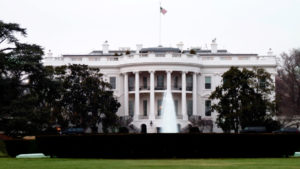Celebrate the Victories—and “Inject Backbone 3x a Day”!
As progressives and liberals breathe a big sigh of relief this morning after racking up victories in yesterday’s election, my Facebook feed is full of chatter about how the Democratic Party is not dead after all, though it’s still very ill.
I responded to one such post thusly:
Curable. Inject backbone 3x/day until they run candidates who stand for the people, give them the support to win, and stop backing down at the first hint of disagreement. Dems should have learned this lesson in 1988 from the disastrous Dukakis campaign. I kept waiting [after George HW Bush kept repeatedly accusing him of being a liberal] for Dukakis to say, “Yes, George, I’m a liberal. Liberals brought us the 8-hour day vs. 10 or 12 hours. Liberals protect the rights of people of all colors and gender identities. Liberals fight for the planet so we can all live healthy lives. Why aren’t YOU a liberal, George?” I think he’d have won with that approach. Instead, he kept doing this horrible, “Gee, I’m sorry, I didn’t mean to be a liberal” crap.
Yup. That time, as so many times, the Dems slunk away with their tails between their legs to count their losses and blame it on not being centrist or rightist enough. And they still seem to believe that rot.
When ordinary people can’t easily tell the Democrats from the Republicans by their positions, the Republicans will win, because being a true Republican is more convincing than being Republican-lite. But being a true Democrat who is seen as standing for the people (rare thing!) generates far more excitement than being a true Republican and a toady to Wall Street and the ideology that puts money ahead of people, rights of the already privileged above rights of ordinary people, and voter suppression ahead of real democracy.
Despite his centrism, Obama was able to portray himself as a man of the people and generate that excitement. And he won, twice.
Gore, Kerry and Hillary Clinton never got this, despite pressure from the Left in the form of mass defections to Ralph Nader, Howard Dean, and Bernie Sanders. Sanders was able to move Hillary and the party platform well to the left, but she was unconvincing. And even when Sanders beat her by 13 points in the Wisconsin primary, she still took the state for granted (never campaigned there in the general election).
The lack of candidates with actual spine and the ability to energize the masses will continue to be a problem until the Dems remember their working-class roots. When they run charismatic progressives in places where the ballots are counted fairly and the populace is not prevented from voting, they tend to win. We get the Cory Bookers, the Barack Obamas, the Elizabeth Warrens.
When they run nonentities, they lose, even in my own very liberal state of Massachusetts. Martha Coakley ran a terrible campaign to keep Ted Kennedy’s Senate seat Democratic, and it went to Scott Brown. But then along came Elizabeth Warren, and boom! Brown ran a nasty campaign, Warren portrayed herself as a people’s champion on economic issues, and she won. And she has kept her promise, expanding it as one of the most pubic opponents of the current regime.
For the most part, the Dems’ lack willingness to take bold positions. Worse, they also lack the spine to challenge Republican-initiated disruption of the electoral process—which is the Democratic Party’s hospital bed, and could become the party’s grave. After narrowly stolen elections in 2000 and 2004, the party didn’t fix the plague of voter suppression in 2009 when it had the chance. And thus the election was stolen again in 2016.
The new governor-elect in Virginia is a centrist who probably won largely on the basis of being far less bad than his openly Trumpist opponent—and because Virginia went back to paper ballots, which cannot be so easily hijacked as electronic-only votes (unlike the recent Congressional race in Georgia, for example). How much stronger the victory if there had been a candidate who truly engaged the populace?

Today is not only the morning after the election. It’s also the one-year anniversary of the theft of our democracy in the 2016 election. While some of the loss is because Clinton was uninspiring, tainted with scandal, and vulnerable to accusations of her loyalty to Wall Street, at least as much was the result of a failed constitutional process that allows candidates with fewer votes to win, big-time voter suppression of likely-Democratic voters, probable fiddling with the results in electronic-only ballot areas, the interference of a foreign government, and other factors that seem to add up to a big fat case of fraud.
I will commemorate this disaster at an impeachment rally in downtown Amherst, Massachusetts, at noon on the corner of Amity and Pleasant Streets. Hope to see you there!









